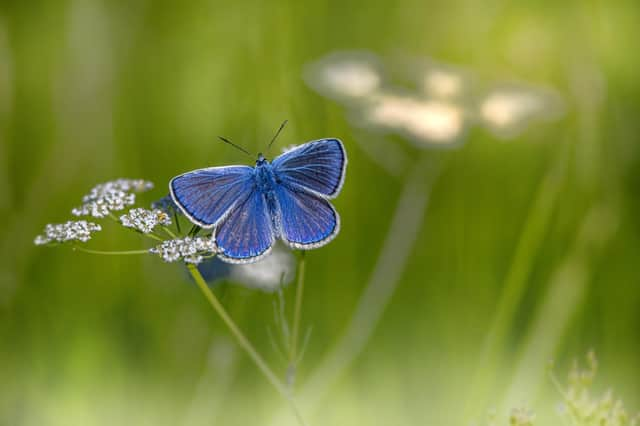Appeal to create pit stops for pollinating insects


The charity has teamed up with TV gardener Alan Titchmarsh for the campaign, which is calling on people to provide butterflies and moths with the plants they need for survival.
There has been a decline of 76% of butterflies in the UK and pit stops of all sizes are needed to help insects get from one area of habitat to the next.
Advertisement
Hide AdAdvertisement
Hide AdThis means that everyone can get involved, no matter how large or small the space they have available. Even a small plant pot on a doorstep or balcony could help provide butterflies and moths with an important foodplant or nectar.
Whether living in a city or village, everyone can contribute to support vital pollinating insects, and have butterflies and moths in their gardens day and night.
Alan, Butterfly Conservation vice-president, said: “By providing a pit stop for pollinators, you will be doing your bit for the insects that allow us to survive. Without them, we are gone. Plants aren’t pollinated and crops don’t grow. We need pollinators and we need to look after the planet for them.
“A really good pit stop for pollinators will have open flowers, which are needed for adult butterflies and moths to feed on, and also some plants on which butterflies and moths can lay their eggs, and for caterpillars to feed on. Something as simple as a bunch of nettles in a sunny corner is one good way to provide this.”
Advertisement
Hide AdAdvertisement
Hide AdSarah Hancocks, marketing projects manager of Vivara, official partner of the campaign, said: “We’ve developed a range of new wildlife borders designed to help you give a corner of your green space back to wildlife, and even have one specifically to encourage butterflies. It includes an array of butterfly-friendly plants including Black-Eyed Susan, Lavender Hidcote, White Coneflower, Garden Catmint, Verbena bonariensis and White Dwarf Buddleja.”
An insect-friendly garden can include plants such as nasturtiums, which provide a foodplant for the caterpillars of both the Large and Small White butterfly and Pot Marigold which provides nectar for adult butterflies.
A free guide can be downloaded at www.butterfly-conservation.org.